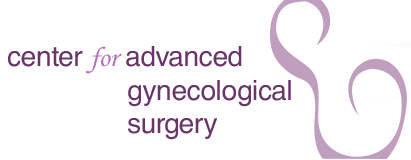- SINGLE PORT LAPAROSCOPIC SUPRA - CERVICAL HYSTERECTOMY
- TOTAL LAPAROSCOPIC HYSTERECTOMY
- MICROSCOPIC TUBAL REVERSAL SURGERY
- SURGERY FOR STRESS URINARY INCONTINENCE
- PELVIC FLOOR RECONSTRUCTION SURGERY
- ADVANCED MICRO - LAPAROSCOPIC SURGERY FOR
ENDOMETRIOSIS - LAPAROSCOPIC MYOMECTOMY SURGERY
- ADVANCED HYSTEROSCOPIC
SURGERY & ENDOMETRIAL ABLATION - TREATMENT FOR OVARIAN DYSFUNCTION PCOS
Polycystic Ovary Syndrome
Polycystic ovary syndrome is a problem in which a woman’s hormones are out of balance, it can cause problems with your periods and make it difficult to get pregnant. PCOS also may cause unwanted changes in the way you look. If it isn’t treated, over time it can lead to serious health problems, such as diabetes and heart disease. Most women with PCOS grow many small cysts on their ovaries. That is why it is called polycystic ovary syndrome. The cysts are not harmful but lead to hormone imbalances. Early diagnosis and treatment can help control the symptoms and prevent long-term problems. Hormones are chemical messengers that trigger many different processes, including growth and energy production. Often, the job of one hormone is to signal the release of another hormone.
Risk of PCOS
Genetics play a role in PCOS. You are more at risk if you have a mother or sister with the condition. Insulin may also be linked to PCOS. Insulin is a hormone that controls how sugars and starches are changed into energy for the body. Higher levels of insulin can increase the amount of androgen in the body.
Signs of PCOS
You may have one or more of these signs:
- Infertility or not able to become pregnancy
- Irregular menstrual cycle (period)
- Pelvic pain
- More hair growth on the body
- Acne or oily skin, or dandruff
- Overweight or weight gain, especially around the waist
- Thick, dark patches of skin appear on the neck, armpits, skin folds, and on the inside of the upper leg
- Less common symptoms may include thinning hair, tiny skin growths (skin tags) in the armpits or neck area
Testing
After a physical exam and a pelvic exam, the doctor will take a medical history. You may also have one or more of these tests to check your health:
- Blood test, to check hormone and insulin levels
- Pelvic ultrasound, to check the ovaries and endometrium or lining of the Uterus
Treatment
Treatment is used to control the signs of PCOS. Your treatment may include:
- Changes to exercise and eating to manage weight
- Birth control to manage menstrual cycles, lower androgen levels and clear acne
- Medicines to manage insulin levels, fertility or other signs of PCOS
- Surgery if medicines are not effective
Talk with your doctor or nurse about the questions you have about PCOS.
Relationship Between PCOS and Diet
Eighty percent of women with PCOS are obese, tending toward an apple-shaped body type. The mainstay of treatment for PCOS is weight loss. A weight loss of only 5 percent can improve insulin resistance, leading to lower levels of male hormones (and less facial hair), improved menstrual function, and a reduction in cholesterol abnormalities. The best approach is a healthy weight-loss diet and exercise routine.
Unfortunately, many women with PCOS have a difficult time losing weight. There may be a connection between high male hormone levels and increased appetite glucose intolerance also may play a role in weight gain.
Even if your weight gain is caused by some physiological consequence of PCOS, lifestyle changes offer you the best chance of successful weight loss. These may include restructuring your eating habits, managing depression and anxiety, learning stress-reduction techniques, and starting an individual exercise program.
Research tells us that a healthy diet includes lean proteins, heart-healthy fats, and a moderate amount of carbohydrates. Lean proteins include fish, skinless poultry, egg whites, beans(especially soy and their products), nuts and nut butters. Heart-healthy fats include liquid oils from olives, canola, soybeans, corn, flax seed, sunflower, and peanuts. In addition, fats from nuts, seeds, and fish are also a healthy choice.
Choose carbohydrates that have a low glycemic index. The glycemic index is a measure of how quickly and how strongly a food increases blood sugar and insulin levels. Choosing foods with a lower glycemic index may help to reduce carbohydrate cravings, especially whole, intact grains that are high in fiber. Eat 100-percent whole-grain breads, brown rice, and steel~ cut oats, or try something new such as barley, couscous, or the grain quinoa. Dried beans, and fruits, such as berries, are also excellent examples of low glycemic foods.
PCOS: Nutrition Basics
Key Facts
- PCOS is a hormone imbalance that can cause irregular periods, unwanted hair growth, and acne.
- The cysts on the ovaries aren’t harmful and don’t need to be removed.
- The treatment for PCOS is healthy nutrition, exercise, and medications.
Diet and exercise are important parts of managing PCOS (Polycystic Ovary Syndrome). This is because young women with PCOS often have higher levels of insulin (a hormone) in their blood, and many have trouble maintaining a healthy weight. Knowing the right foods to eat as well as the kinds of food to limit can improve the way you feel. It will also help you lose weight. Eating well, staying active,and maintaining a healthy weight (or losing even a small amount of weight if you’re overweight) can improve PCOS symptoms.
What do I need to know about insulin and carbohydrates?
The insulin level in your blood goes up after you eat. It goes up the most after you eat or drink something that contains carbohydrates. Carbohydrates are found in grains (such as bread, pasta, rice, and cereal), most snack foods (such as chips, cookies, and candy), sugary drinks such as soda and juice, and fruits and vegetables.
Are all carbohydrates the same?
No. Even if you eat two foods that have the same amount of carbohydrate, they may have a different effect on your insulin level. This effect has a lot to do with the type of carbohydrate the food has. Carbohydrate foods with fiber such as whole grains, fruits, and vegetables are usually the best to eat if you’re trying to keep your insulin level down. Carbohydrate foods that are sugary or refined (such as soda, juice, white bread, and white rice) can cause insulin levels to go up. Foods and drinks like this are also not very filling (which means you may feel hungry shortly after eating them). Try to choose high-fiber, low-sugar carbohydrate foods most of the time.
Do I need to buy special foods?
No. You don’t need to go out of your way to buy special foods. Just like with any healthy diet plan, your meals should include a healthy balance of vegetables, fruits, whole grains, plant-based protein, lean meats, and healthy fats. Most foods fit into a healthy diet for PCOS, but you should read food labels to help you pick out the best choices. Look for high-fiber grains such as brown rice, whole-wheat pasta, and whole-wheat bread rather than low-fiber grains such as white rice, pasta, or white bread.
Don’t be fooled by fat-free treats. They usually have a lot of added sugar. Also, some sugar-free foods (such as baked goods) are made with refined grains such as white flour and can raise your insulin levels the same way sugar can. Other sugar-free foods are carbohydrate free. These foods, sweetened with artificial sweetener, may be a good alternative if they don’t upset your stomach. There is currently no scientific data that suggests moderate amounts of artificial sweetener are harmful to our health. However, these foods and drinks are processed. Try to stick to the most natural, whole form of each food (i.e., lemon sliced in water instead of diet lemonade).
Instead of:
- Sweetened juice, canned fruit in heavy syrup, or sweetened applesauce
- Starchy vegetables such as potatoes, corn, and peas
- Refined grains made with white flour such as white bread and pasta, bagels, or white riceSugared cereals such as Lucky Charms®, Fruit Loops®, or Frosted Flakes®, and other sweetened grains such as cereal bars (Nutrigrain Bars®), breakfast pastries (Pop Tarts®), and donuts
- Sugary drinks such as soda or juice
- Sugary foods such as cookies, cakes, and candy
- Snacks such as potato chips, Fritos®, Doritos®, and tortilla chips
Choose:
- Fresh fruits or frozen/canned fruit without added sugar, or unsweetened applesauce
- Non-starchy fresh vegetables or frozen/canned vegetables such as broccoli, spinach, and carrots
- Whole grains such as whole wheat pasta, brown rice, oats, and whole wheat bread
- High fiber cereals such as Kashi®, shredded wheat, and All Bran®. (Look for cereals that have at least 5 grams of fiber per serving or sprinkle 1/2 cup of bran cereal or unprocessed bran on a low-fiber cereal to increase the fiber)
- Water or seltzer, flavored with fruit if desired, unsweetened iced tea
- High fiber baked goods made from whole wheat flour and oats
- Crackers and snacks with fiber such as Triscuits®, Wasa®, or popcorn
Are “carbs” unhealthy?
No! Carbs (carbohydrates) give your body energy. Some people think that eating carbs will make them gain weight, but carbs will make you gain weight only if you eat too much. Many other important nutrients come from carbohydrate foods, so eating no carbs is not a good idea. Because high-fiber carbohydrate foods are high in nutrients and help you feel full longer than sugary low-fiber carbohydrates, it’s best to choose these as often as possible.
What about foods that have fats and proteins in them?
Protein foods such as beans, hummus, nuts, peanut butter, tofu, eggs, fish, chicken, meat, and vegetarian meat substitutes, and fats such as olive oil, nuts, and avocado are important parts of a PCOS-friendly diet. Combining foods that contain protein or fat with a carbohydrate will help to slow down the absorption of the carbohydrate and keep insulin levels low. For example, instead of plain rice, have rice with beans and a little avocado.Keep in mind that some fats are much healthier than others. Healthy fats are found in olive oil, canola oil, nuts, avocados, and fish. Choose healthy fats and proteins instead of butter, margarine, mayonnaise, full-fat cheese, creamy sauces or dressings, and red meat.
Do I need to follow a diet that is extra high in protein?
No. Really high protein diets (such as the Atkins diet) are not a good diet option for teens because they can be low in some important nutrients such as fiber. the B vitamins, and vitamin C. It’s also important to remember that even if you limit your carbohydrate intake, overeating fat or protein can cause weight gain. You should aim for a diet that has a balance of protein, healthy carbohydrates, and some fat.
What does low glycemic index mean?
Glycemic index is a term used to describe how a food affects blood sugar. The higher a food raises blood sugar, the higher the glycemic index. High-fiber carbs have a lower glycemic index than sugary or refined carbs. Combining a carbohydrate food with another food can lower the glycemic index because it allows your body to absorb the carbohydrate more slowly. For example, if you have a piece of candy immediately after a meal it will not raise your blood sugar as high as it would if you ate the candy on its own between meals.
What fruits and vegetables have a low glycemic index?
Vegetables such as asparagus, broccoli, carrots, cauliflower, celery, cucumber, green beans, spinach, tomatoes, and zucchini and fruits such as apples, berries, grapes, oranges, peaches, and plums have a low glycemic index. Fruits and vegetables with more sugar or starch have a higher glycemic index (such as dried fruit, tropical fruit, corn, potatoes, squash, and peas).
Should I avoid dairy, sugar, gluten, or soy?
There is no current scientific data to support restricting or avoiding specific food groups or types of foods in order to improve PCOS symptoms. Following the dietary advice presented here, in addition to exercising, are healthy ways to manage weight and decrease symptoms.
If I choose the right foods, do I still need to be worried about my portion sizes?
Yes! How much you eat also affects your insulin. For example, your insulin will go up much more if you have 3 cups of pasta than if you have 1 cup of pasta. This means it’s usually better to have small meals and snacks during the day than it is to have a few really big meals. Having more frequent smaller meals and snacks will keep your insulin level lower throughout the day.
What is the Nutrition Facts label?
The Nutrition Facts label explains what nutrients (components of food your body needs to grow and stay healthy) and how much of those nutrients are in found in one serving of the food. It’s located on the outside of most food packages, but isn’t on most fresh foods (such as fruits and vegetables or meats). The Nutrition Facts label can help you make choices about the food you eat.
What will every Nutrition Facts Label have on it?
The label will have some or all of the following nutrients listed:
- Serving Size: Serving size equals one serving of the product. All the other nutrient values listed on the label are based on this amount.
- Servings per Container: This number is how many servings you can get from one package. Some containers have a single serving, but most have more than one serving per package.
- Calories (total): Calories are a unit of energy that come from carbohydrates, protein and fat. Calories give us energy so we can think and be active.
- Calories from Fat: This number is the amount of calories that come from fat. It’s not the percent of fat in the food.
- % Daily Value: This value is the percentage of the recommended daily value for a nutrient that you get in one serving. A food that has more than 20% of the Daily Value of a nutrient is an excellent source; however, for some nutrients such as fat, sodium, and cholesterol, the lower the percent, the better.
- Total Fat: Fat is essential for our bodies. There are 4 kinds of fat. Monounsaturated and polyunsaturated fat are the kinds of fat that are healthy for the heart.
- Trans Fat: Trans fat is unhealthy for your heart, and should be avoided.
- Cholesterol: Cholesterol is a substance found only in animal products. Eating too much cholesterol is not healthy for your heart.
- Sodium: Sodium is the amount of salt in the serving of food. People with high blood pressure are often told to follow a low sodium diet.
- Total Carbohydrate: Carbohydrates give your muscles and brain energy. Certain types of carbohydrates are sometimes listed on the label.
- Dietary Fiber: Helps with digestion and keeps you full between meals.
- Sugars: Are important for instant energy, but eating too much added sugar can be unhealthy.
- Protein: This nutrient is used to build muscle and fight infections.
- Vitamins and Minerals (A, C, Calcium, Iron): This amount is the percent (%)Daily Value for vitamin A, vitamin C, calcium, and iron you are getting from a serving of this product. Other vitamins and minerals may be included in this section.
Other nutrients, such as polyunsaturated or monounsaturated fat and other vitamins and minerals, can also be put on the Nutrition Facts label if the company that makes the food wants them listed.
What should I look for on the Nutrition Facts Label?
The first thing you should look at is serving size. The amount of each nutrient on the label is what’s found in one serving of that food, not in the whole container. If you don’t know what one serving size is, you won’t know the amount of each nutrient you’re actually getting. For example, a large bag of microwave popcorn has three servings in it. It’s okay to eat more than one serving at a time, but it’s important to know that if you eat the whole bag, you’d be getting three times what’s listed on the label. Portion control is an important part of healthy eating for PCOS, so keep the serving size in mind.
Do I need to read every Nutrition Facts Label?
No. You don’t need to keep track of every nutrient you are eating. Just take a look at Nutrition Facts labels once in a while to help you make healthy choices and choose foods that will give your body the nutrition it needs. For example, if you don’t drink much milk, you should read Nutrition Facts labels to help you find other foods that are high in calcium. You can also use the Nutrition Facts label to compare two different foods. For example, if you are deciding between two different kinds of breads, reading the Nutrition Facts labels can help you make a healthy choice. Consider choosing the bread that has the highest amount of fiber.
The food label lists a 2000-calorie diet. Should I be eating 2000 calories?
It’s possible that a 2000-calorie diet may be right for you, but many adolescents need more than 2000 calories as they grow in height, build bones, build muscles, and stay active, and some need less. The 2000-calorie diet is just an estimate and is used to help calculate the Percent (%) Daily Value listed on the Nutrition Facts label.
Is it important for me to exercise?
Yes! It’s really important that girls with PCOS exercise, because exercise brings down insulin levels, and can help with weight loss. Exercise can be especially helpful in lowering insulin after a meal. So, if possible, go for a walk after you eat a large meal. Any increase in exercise helps, so find an activity, sport, or exercise that you enjoy. Work towards increasing activity to at least 4days a week for 45 minutes per day.














 Publications
Publications Get Patient Forms
Get Patient Forms Patient Education
Patient Education Online Appointment
Online Appointment


